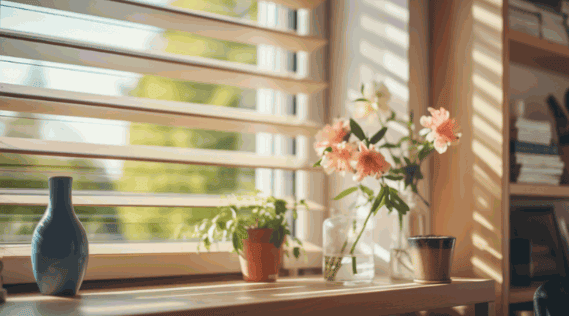
Window blinds, such as Venetian blinds and roller blinds, can transform a room’s ambiance, but they often gather dust and grime over time, emphasizing the need for regular cleaning chores like vacuuming floors and dusting blinds.
Keeping them clean is not just about aesthetics; it’s essential for maintaining air quality and prolonging their lifespan.
This article explores the importance of cleaning window blinds, the consequences of neglecting them, and a variety of types available, including cellular shades and Faux Wood blinds.
You'll also find the materials needed, a straightforward step-by-step cleaning guide, and helpful cleaning tips for ongoing maintenance, like using dish soap and dishwashing liquid.
Dive in to ensure your blinds stay fresh and inviting!
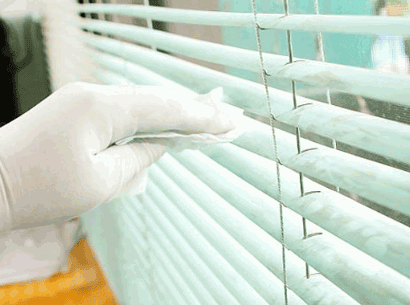
Why Is It Important To Clean Window Blinds?
Table of Contents
Cleaning window blinds is an essential household chore that not only enhances the aesthetics of your home but also contributes to a healthier indoor environment. Over time, dust, allergens, and dirt accumulate on blinds, especially in areas like Queens, which may lead to respiratory issues and reduced air quality. Regular tasks such as cleaning windows and washing laundry help keep your environment clean.
According to the Good Housekeeping Institute, regular cleaning is crucial to maintain the function and appearance of various types of blinds such as wooden blinds and fabric blinds. Additionally, a clean living space reflects well on your personal hygiene and creates a welcoming atmosphere for guests.
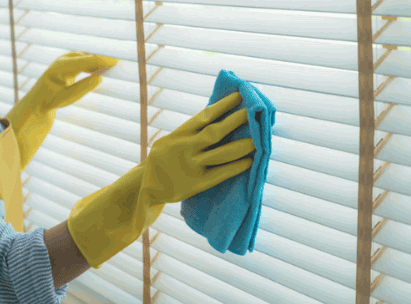
What Happens If You Don't Clean Window Blinds?
Neglecting to clean window blinds can lead to the accumulation of dirt and allergens, which can pose health risks for individuals with allergies or respiratory issues, complicating their everyday lives and potentially triggering serious health conditions that require medical attention and ongoing management.
For example, those with asthma may find their symptoms exacerbated by the presence of dust mites and mould spores, both of which thrive in dirty blinds. This makes it essential for everyone, especially allergy sufferers, to maintain a regular cleaning schedule.
Here are some common cleaning methods that can effectively remove stubborn stains and ensure a healthier living environment:
- Dusting with a microfibre cloth to capture particles instead of spreading them around.
- Using a vacuum attachment to reach the intricacies of the blinds easily.
- Employing a mixture of warm water and mild detergent for deeper stains when necessary.
Consistent cleaning not only keeps the blinds looking great but also minimises allergens in the air, reinforcing the importance of employing proper cleaning techniques.
Types Of Window Blinds
There are various types of window blinds available, each with its unique characteristics, including:
- vertical blinds
- horizontal blinds
- wooden blinds
- fabric blinds
These require tailored cleaning techniques and specific cleaning products to maintain their appearance and functionality.
Vertical Blinds
Vertical blinds, commonly used for larger windows and sliding doors, require specific cleaning products and techniques to effectively remove dust and dirt, ensuring they maintain their aesthetic appeal and functional integrity over time. Brands like Hillarys and Greenworks offer solutions for these tasks.
In terms of cleaning vertical blinds, choosing the right products is essential. It is advisable to use mild detergents mixed with warm water, along with soft cloths or sponges, to avoid damaging the material.
- Routine maintenance is key; dusting should occur every few weeks, while deeper cleaning might be needed every few months, depending on environmental factors.
- For a quick dust removal, a microfibre duster or a vacuum with a brush attachment can be effective.
Consider using specialised blind cleaning solutions which can help eliminate stubborn grime without harming the texture of the blinds.
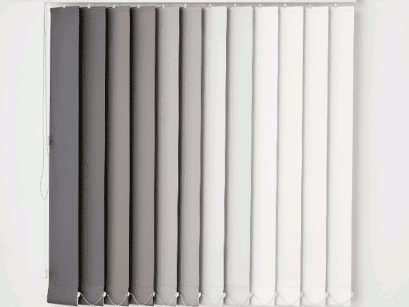
Horizontal Blinds
Horizontal blinds, a popular choice for many households, allow for easy dusting and can be maintained with simple cleaning techniques that ensure they remain functional and aesthetically pleasing. By implementing these techniques, one can prolong the lifespan of the blinds, reduce allergens, and keep their living space looking fresh and inviting. Consider using products like Swiffer and Dawn Powerwash Spray for effective cleaning.
To start, gather the necessary materials:
- Microfibre cloths
- Wood or vinyl cleaner
- Warm, soapy water
- A soft brush or vacuum with a brush attachment
Before cleaning, it is advisable to tilt the blinds open, making it easier to reach each slat. Gently wipe down each slat with a microfibre cloth dampened in the soapy water solution, ensuring you catch any dust and debris that may have accumulated.
For stubborn stains, opt for a specialised cleaner suited to the material of the blinds. To prevent future build-up, consider a quick dusting session every week or two.
These simple yet effective habits not only maintain the appearance of horizontal blinds but also keep the environment healthier for you and your family.
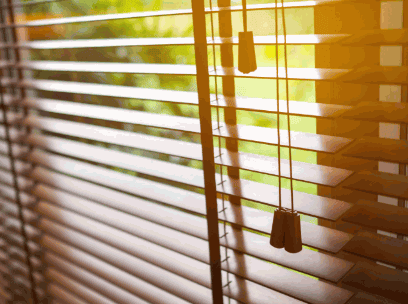
Wooden Blinds
Wooden blinds require a delicate cleaning process to preserve their finish while effectively removing dust and allergens.
To maintain their beauty and functionality, it is crucial to use appropriate cleaning methods and products tailored specifically for wood blinds. Unlike synthetic materials, wood can be sensitive to harsh chemicals and excessive moisture, so using gentle products like those recommended by Architectural Digest is advised.
Start by dusting the blinds with a microfiber cloth or a duster, which will effectively capture dust without scratching the surface. For a deeper clean, use a solution of mild washing-up liquid and warm water, applying it sparingly with a soft cloth. Remember to avoid soaking the wood, as excess water can warp or damage it.
- Use furniture polish occasionally for added shine and protection.
- Avoid commercial cleaners containing ammonia or bleach.
Regular maintenance not only enhances their appearance but also prolongs their lifespan, ensuring your investment remains worthwhile.

Fabric Blinds
Fabric blinds can attract dust and stubborn stains, making regular cleaning essential to maintaining their appearance and ensuring a lasting, fresh look that enhances your home’s aesthetic.
To effectively care for these window treatments, consider using a combination of gentle cleaning solutions and regular maintenance routines, including employing techniques recommended by experts like Yvonne Keal from the Good Housekeeping Institute.
- Begin with a soft brush attachment on a vacuum cleaner or a microfibre cloth to remove loose dust particles.
- For stubborn stains, a mixture of mild soap and lukewarm water can be applied with a soft cloth; always test a small area first to prevent damage.
- When using any cleaning solution, it's advisable to follow the manufacturer’s guidelines for the fabric type.
It’s beneficial to use protective measures, such as avoiding placing blinds in direct sunlight for long periods to prevent fading and discolouration. In doing so, one can prolong the lifespan of their fabric blinds while keeping them looking pristine, as recommended by experts from Hofstra University.
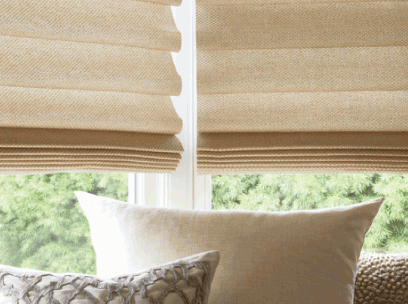
Materials Needed For Cleaning Window Blinds
To effectively clean window blinds, you will need essential materials such as a vacuum cleaner, microfibre cloths, and cleaning solutions like vinegar and washing-up liquid, which provide a comprehensive cleaning approach.
Take a look: What Is The Best Window Cleaner
Vacuum Cleaner
A vacuum cleaner is an effective tool for quickly removing dust from blinds, especially when fitted with a brush attachment, making it a preferred choice for cleaning methods.
Using a vacuum cleaner not only saves time but also enhances efficiency in maintaining the cleanliness of your blinds.
Incorporating the right vacuum attachment can significantly impact results. Here are some tips for choosing the best option:
- Choose a brush attachment specifically designed for delicate surfaces. This helps in preventing damage while ensuring a thorough cleaning.
- Consider a handheld vacuum for tighter spaces, allowing you to reach those tricky angles with ease.
- Look for adjustable suction settings to cater to various materials and dust levels.
By considering these factors, the efficiency of your cleaning routine will be greatly enhanced, providing a fresh and dust-free environment.
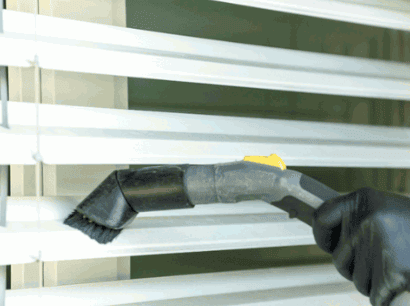
Microfiber Cloth
Microfibre cloths are ideal for dusting and wiping down window blinds due to their ability to trap dust and allergens effectively without scratching surfaces.
This unique material consists of tiny fibres that create a static charge, helping to lift dirt and debris away rather than spreading it around. When using microfibre cloths for cleaning blinds, it is beneficial to adopt a few simple application methods:
- First, gently wrap the cloth around your fingers to create a soft tool that fits snugly into the slats, allowing for efficient cleaning.
- Next, lightly dampen the cloth with a cleaning solution to enhance its dust-attracting properties, preventing finer particles from drifting back into the air.
- For optimal results, ensure cleaning from top to bottom, as this strategy minimises the redistribution of dust.
Maintenance of the microfibre cloths is equally crucial. Wash them in cold water, avoiding fabric conditioners as they can diminish the cloth's effectiveness. Regular cleaning will ensure they maintain their superior dust-trapping capabilities, making them a fantastic and eco-friendly choice for household upkeep.
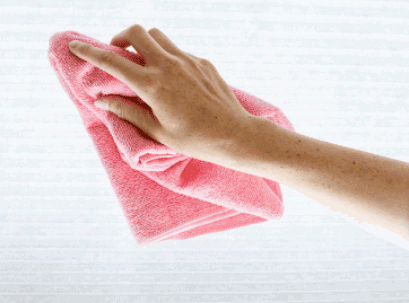
Vinegar Solution
A vinegar solution is an excellent natural cleaner for window blinds, effectively cutting through grime and leaving surfaces streak-free. Not only does this affordable cleaning method minimise the need for harsh chemicals, but it also ensures a safer environment for families and pets alike.
To create the perfect vinegar solution, combine equal parts of white vinegar and water in a spray bottle. This simple mixture can tackle various types of blinds, including fabric, aluminium, and vinyl, making it versatile.
- Gently dust the blinds using a microfibre cloth to remove loose dirt.
- Spray the vinegar solution lightly on the blinds.
- Wipe down each slat with a clean cloth, focusing on any stubborn spots.
The natural acidity of vinegar not only cleans but also acts as a disinfectant, enhancing the overall cleanliness of your living space.
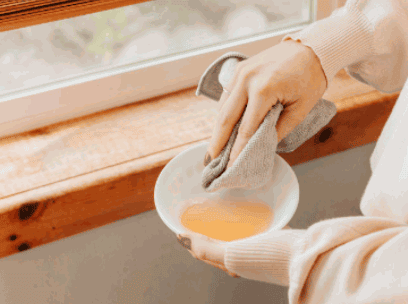
Dish Soap Solution
A washing-up liquid solution can effectively target stubborn stains and provide a thorough cleaning for various types of window blinds.
Creating a washing-up liquid solution is quite simple and can lead to remarkable results. Begin by mixing a few drops of a gentle washing-up liquid with warm water in a bucket. The warm water helps to dissolve grease and dirt more efficiently, making it easier to lift stubborn stains from the blinds.
In terms of application, it’s advisable to use a soft cloth or sponge dipped in the soapy solution, ensuring it’s not overly saturated to prevent drippage. Gently wipe each slat, paying extra attention to any spots that appear to be particularly dirty.
- For tough grime, allow the solution to sit for a minute before scrubbing.
- Always test a small hidden area first to ensure the blinds' material is compatible with the solution.
After cleaning, wipe with a damp cloth to remove any leftover soap and let the blinds air dry for a sparkling finish.
Step-by-Step Guide For Cleaning Window Blinds
This step-by-step guide will help you through the entire cleaning process for window blinds, ensuring that you achieve optimal cleanliness while effectively managing your cleaning tasks.
Dusting The Blinds
The first step in cleaning window blinds is dusting, which can be effectively done using microfiber cloths to capture dust and allergens.
To achieve optimal results, it's essential to approach the task methodically. Begin by selecting a clean microfibre cloth that is slightly damp to enhance its dust-attracting capabilities. Hold the slats of the blinds firmly with one hand while using the cloth in a gentle, wiping motion with the other. This technique ensures that any accumulated dirt is effectively caught and removed without leaving behind residue.
- Tips for thorough cleaning from Yvonne Keal at Hillarys:
- Start from the top and work your way down to avoid resettling dust on already cleaned areas.
- For horizontal blinds, wipe each slat individually, repositioning the cloth to cover all surfaces.
- Use a ladder or step stool if needed to reach higher blinds safely.
Following these guidelines will help keep window blinds looking pristine while minimising allergens in your home. Consider using a Swiffer for quick touch-ups.
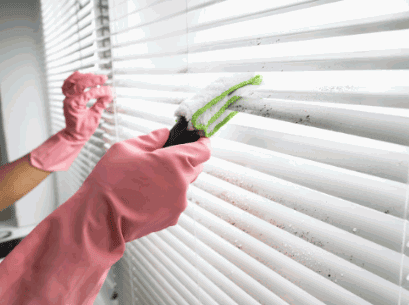
Vacuuming The Blinds With Tools
After dusting, vacuuming the blinds with a vacuum cleaner will remove any remaining dust and debris, providing a thorough cleaning.
Utilising a vacuum cleaner not only enhances the aesthetic of your blinds but also contributes to a healthier living environment. Employing the right attachments is crucial; consider using a crevice tool to effectively reach into corners and crevices where dust tends to accumulate.
Here are some techniques to ensure a meticulous cleaning process:
- Turn the blinds: Angle them fully open to allow for easy access.
- Use the right suction: Adjust the settings on your vacuum to avoid damaging delicate materials.
- Ventilate: Open nearby windows to circulate air, making it easier to see dust floating away.
Regular maintenance, including vacuuming, will prolong the life of the blinds and keep them looking as good as new.
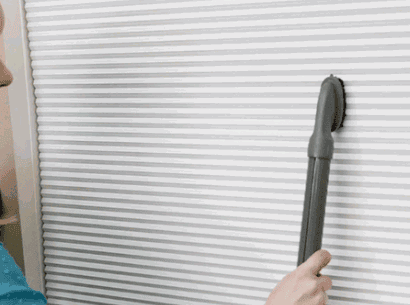
Wiping Down With Vinegar Solution
Using a vinegar solution is a crucial step in the cleaning process, as it helps dissolve grime and leaves the blinds sparkling clean, valuable for cleaning Venetian blinds, Faux Wood blinds, or Pleated blinds, enabling homeowners to maintain the fresh and inviting indoor environment without relying on harsh chemicals.
To properly apply the vinegar solution to the blinds, mix equal parts water and white vinegar in a spray bottle. Lightly mist the blinds, focusing on the areas with more buildup. Use a soft cloth or a microfibre duster to gently wipe each slat, following the direction of the blinds. The vinegar solution not only cleans but also eliminates odours, leaving your home smelling fresh.
After cleaning, it’s important to rinse or dry the blinds to prevent any vinegar smell from lingering. Here are some tips from Jodhaira at Hofstra University:
- Wipe with a damp cloth to remove any excess vinegar.
- Allow the blinds to air dry by leaving them open.
- If necessary, use a clean, dry cloth to speed up the drying process.
By following these steps, you can enjoy the multitude of benefits this natural cleaner offers while ensuring your blinds regain their pristine condition.
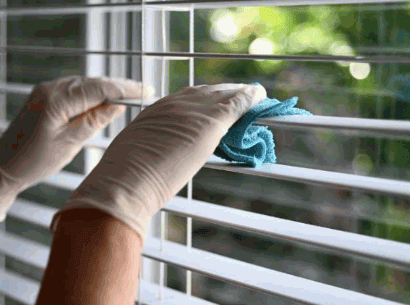
Deep Cleaning With Dish Soap Solution
For a thorough clean, especially for stubborn stains, a washing-up liquid solution can be applied to deep clean the blinds.
This simple yet effective method not only revitalises the appearance of blinds but also aids in maintaining their longevity. To begin, prepare a solution by mixing warm water with a few drops of your favourite washing-up liquid or Dawn Powerwash Spray. The warm water helps to loosen any grime, while the liquid cuts through grease.
- Soaking Method: For more stubborn dirt, use a microfibre cloth soaked in the mixture.
- Gently wipe the surfaces, allowing the solution to penetrate the stains.
- After soaking for several minutes, rinse with clean water using another cloth.
For lighter cleaning needs, a simple rinse with the soap solution followed by thorough drying can work wonders. Always ensure the blinds are completely dry to prevent any moisture damage.
Tips For Maintaining Clean Window Blinds
Maintaining clean window blinds is easier with consistent cleaning tips and a routine that incorporates regular dusting and quick cleaning methods. Consider products like Greenworks or Dishwashing liquid for effective maintenance.
